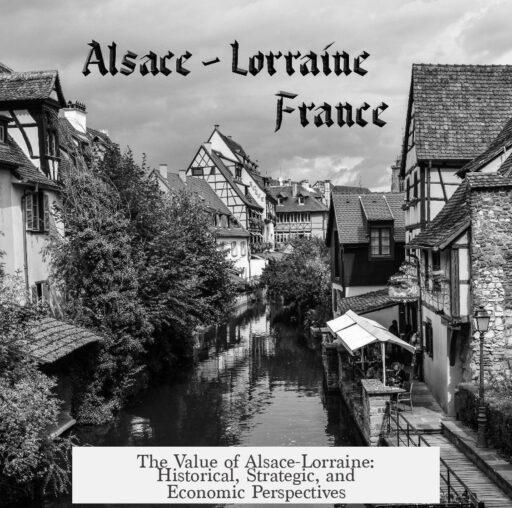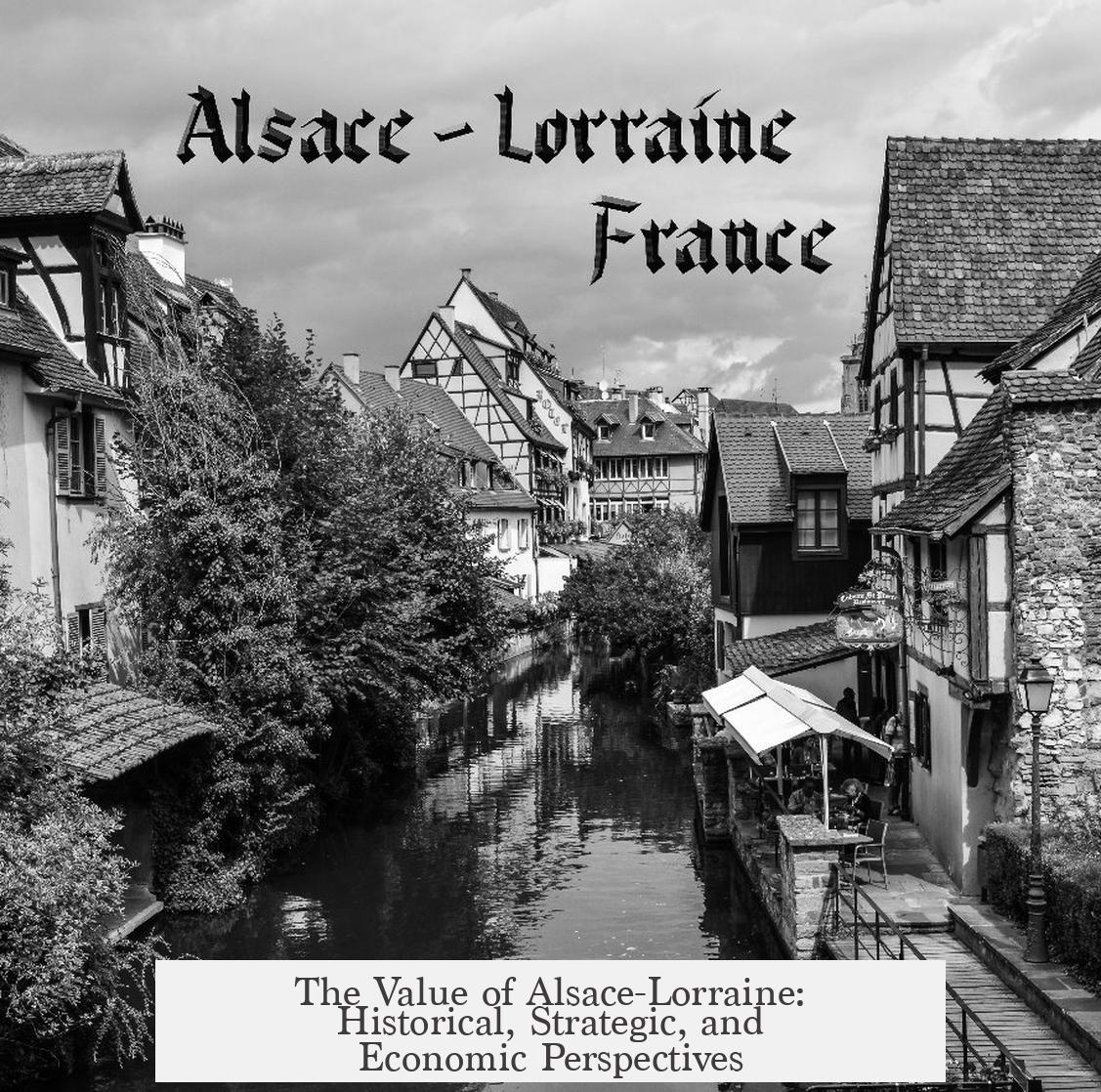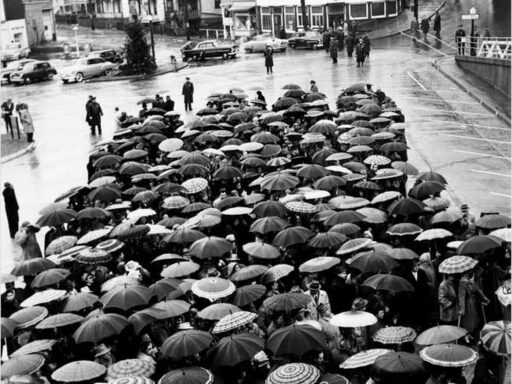Alsace-Lorraine is valuable primarily due to its rich mineral resources, strategic location, and complex cultural history. The region’s iron and coal deposits played a central role in its importance during the Industrial Age. This mineral wealth fueled both French and German industrialization, making Alsace-Lorraine an economic prize. Its strategic geography also served military purposes, acting as a buffer and defensive zone between France and Germany. Moreover, the area’s cultural identity, historically influenced by both French and German rule, adds to its political significance.
Historically, Alsace and Lorraine have changed hands multiple times. After the fall of the Western Roman Empire, they fell under Germanic control and later the Franks until 870. Over centuries, Alsace became part of a duchy with Suabia, while Lorraine became an independent duchy within Germany. Both areas were predominantly German-speaking for centuries before France annexed them—Alsace after the Thirty Years War and Lorraine by inheritance in 1766. Despite this, their populations remained culturally German until the French Revolution. Afterward, their identity shifted toward France, especially by the 1870s, when citizens showed loyalty through military service and revolutionary ideals.
This cultural shift created tension. Both Alsace and Lorraine did not favor annexation but were forced into French control. French outrage over losing these provinces later fueled intense competition between France and Germany, especially during the 19th and 20th centuries. The region became a hotly contested zone in both World Wars due to this mixed identity and strategic relevance.
| Key Aspects | Details |
|---|---|
| Military Geography | The Vosges Mountains offer a defensible barrier more effective than the Rhine River, making Alsace-Lorraine a defensive buffer against future French invasions. |
| Strategic Location | Situated on the Rhine River and near vital routes like the Spanish Road, the region was critical for military operations and controlling trade between France, Germany, and the Netherlands. |
| Economic Wealth | Home to the world’s second-largest iron ore deposit by 1918 and abundant coal beds, essential for steelmaking during the Industrial Revolution. |
The region’s mineral deposits are central to its value. Before World War I, the importance of Alsace-Lorraine’s iron and coal became clear. Lorraine alone accounted for around 2,000 million tons from Germany’s 2,800 million tons of iron ore. The discovery of the dephosphorizing process elevated the strategic importance of these ore deposits, critical for producing quality steel. This boosted both French and German industrial power, justifying the fierce competition to control the region.
Today, Alsace and Lorraine remain among France’s wealthiest parts due to steel and automotive industries. The region forms part of the European industrial heartland. To manage tensions and competition, the European Steel and Coal Community was created, which later evolved into the European Union. This cooperation allowed the French and German economies to benefit collectively while reducing territorial disputes.
- Alsace-Lorraine’s military significance comes from its natural defenses and position on major transport routes.
- Its iron and coal reserves have been vital for industrial growth and remain economically significant.
- The region’s mixed French-German cultural identity adds political complexity.
- Repeated territorial changes reflect its importance to national pride and security.
- European integration efforts have helped stabilize the region and transform its value into cooperation rather than conflict.
Nationalist sentiments further complicate Alsace-Lorraine’s status. German irredentism viewed the region as rightfully German, seeking its reclamation. Meanwhile, France considered it crucial for defense, economy, and national identity. This rivalry led to repeated shifts in control, including the Franco-Prussian War, World War I, and World War II. After 1945, most agreed that unresolved claims risked continuing hostility, prompting efforts for lasting peace.
In cultural terms, Alsace and Lorraine still reflect German influences. Many locals speak both French and German, preserving a unique heritage. This bilingualism highlights the enduring legacy of the region’s history and mixed governance. It offers a bridge between France and Germany in a region once known for conflict.
Both France and Germany see Alsace-Lorraine not just as territory but as symbolic ground for their historical narratives and future cooperation.
Alsace-Lorraine’s value lies in its intersection of natural resources, military strategy, and cultural significance. Its iron and coal fostered industrial strength; its position offered military advantage. The blending of identities made it politically charged but now supports European partnership. This multifaceted importance continues to shape the region’s role in Europe.
Why is Alsace-Lorraine so Valuable?
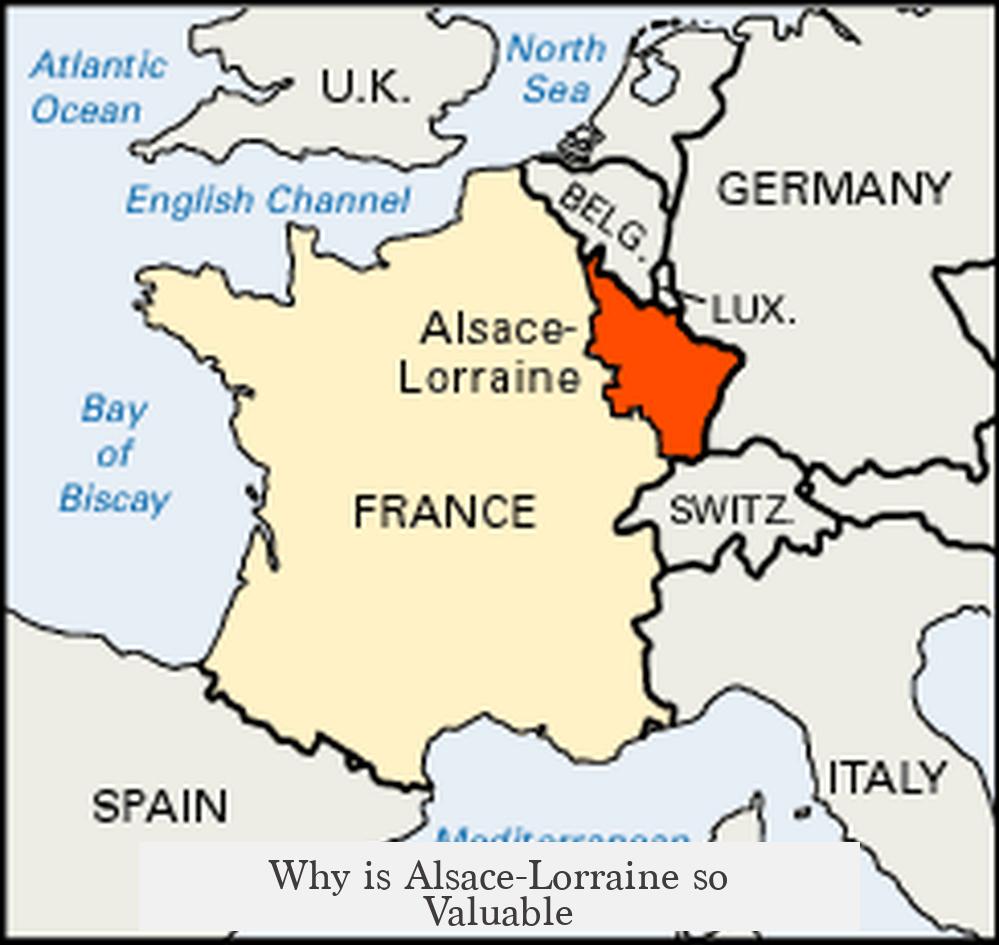
Alsace-Lorraine is valuable because of its rich natural resources, strategic military location, and complex cultural and political history that has shaped European power dynamics for centuries. But this short summary hides a whirlwind tale that mixes mountains, mines, monarchs, and modern economic engines.
Let’s peel back the layers and explore why this seemingly small patch of land holds such huge significance. Spoiler alert: it’s not just the picturesque vineyards or quaint villages, although those are charming too!
Historical Roots: A Cultural Tug-of-War
After the collapse of the Western Roman Empire, Alsace and Lorraine fell into the hands of Germanic tribes before becoming part of the Frankish realms. These regions developed distinct identities—Lorraine became an independent duchy within Germany, while Alsace aligned with the Duchy of Suabia.
Both were German-speaking for centuries and remained nominally under German control until the Thirty Years’ War, when France annexed Alsace. Lorraine followed suit much later, in 1766, due to dynastic changes.
The French Revolution stirred the pot. Alsatians and Lorrainers, long culturally German, began to embrace French ideals through military service and political intrigue. By the 1870s, they had largely adopted a French identity—making the eventual German annexation after the Franco-Prussian War a bitter pill to swallow.
This century-long shift in cultural identity is a reminder that borders on a map often mask the complex loyalties, emotions, and identities of real people living there. It also explains the intense emotions tied to the region, fueling Franco-German tensions well into the 20th century.
The Strategic Military Prize
Beyond history and culture lies a more concrete reason why Alsace-Lorraine was contended: geography. The Vosges Mountains provide a natural fortress more defensible than the nearby Rhine River.
Otto von Bismarck initially hesitated to annex Alsace-Lorraine, but then-German General Helmuth von Moltke insisted on its strategic necessity. The region acts as a buffer zone protecting the German heartland from any French invasion attempts.
It’s also situated along the Rhine River—Europe’s economic and military artery flowing through Germany, France, and the Netherlands. Control here meant dominance over regional commerce and troop movements.
Historically, the “Spanish Road” military route passed through Alsace, linking Spain to its Netherlands territories. France’s interest in disrupting this route underscores that Alsace-Lorraine was a pivotal chess piece in broader continental conflicts.
Economic Powerhouse: Iron, Coal, and Industry
The heart of Alsace-Lorraine’s value beats through its mineral wealth. During the industrial boom before World War I, the region’s raw materials became priceless.
The Vosges Mountains may be scenic, but beneath them hides one of the world’s largest iron ore reserves discovered by 1918. Lorraine alone contained two billion tons of iron ore, staggering compared to Germany’s total of 2.8 billion.
The discovery of dephosphorizing processes enhanced the iron’s value, transforming these deposits into critical resources for steelmaking. Steel meant railways, weapons, automobiles—tools that defined modern economies and warfare.
Alsace-Lorraine’s coal beds fueled the same industries, forming an industrial triangle with the Saarland and Ruhr regions. This synergy gave both France and Germany an economic edge during periods of rapid industrialization.
Fast forward to today, and these regions remain among France’s wealthiest, thanks to established steel and automotive sectors. The economic legacy of these minerals is profound and still vibrant.
Political Nationalism and the Irredentist Flame
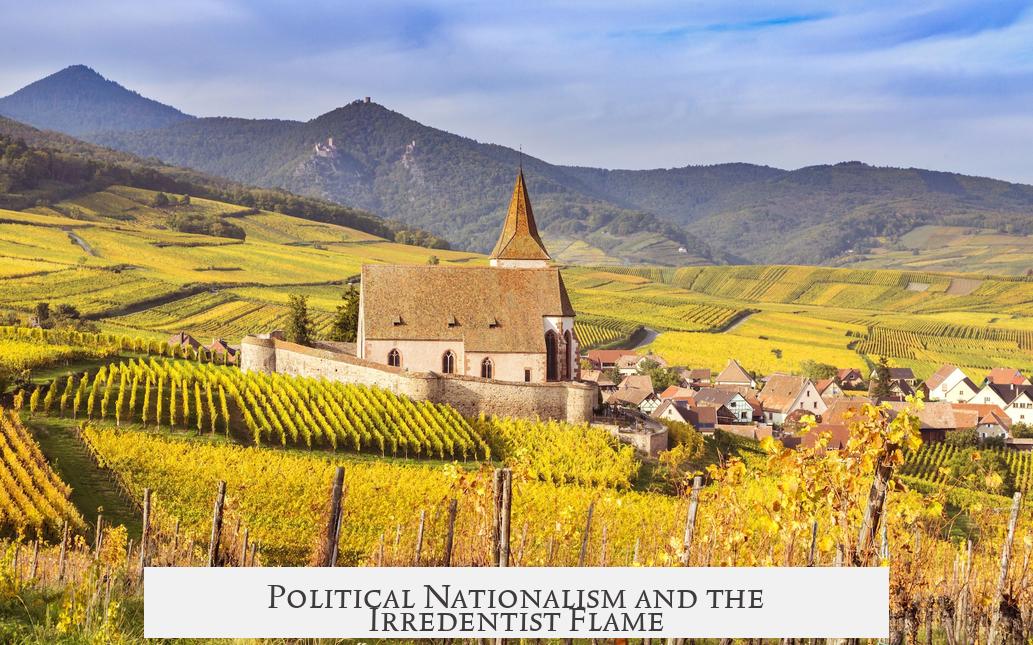
Alsace-Lorraine is not just a resource hub; it’s a symbol of national pride and contested nationalism. German irredentists viewed the region as rightfully German, while the French considered it integral to their nation’s identity.
This tug-of-war played out repeatedly: after the Franco-Prussian War, the Treaty of Frankfurt forced Alsace-Lorraine into German hands—a move unpopular with locals and the French alike. It oscillated back to France after World War I and once again briefly under Nazi control during World War II.
The constant shifts ensured the region became a focal point of Franco-German animosity. It was more than geography or economy; it was a deeply personal issue for both nations, a reminder of loss and victory etched in generations.
Solutions Through Cooperation: The Birth of European Integration
Thankfully, the mid-20th century saw lessons learned. Recognizing that conflict over Alsace-Lorraine would only reignite long-standing hostilities, European leaders sought new paths.
The formation of the European Steel and Coal Community (ESCC) aimed to bind French Alsace-Lorraine with the German Saar and Ruhr mining areas economically. The idea was simple: cooperation could produce prosperity and peace faster than competition and war.
This community was a precursor to the European Union and helped keep Alsace-Lorraine stable, preventing the repeated territorial disputes of previous centuries.
Culturally, this cooperation meant German influences remained strong. Today, many locals speak both French and German, adapting a dual heritage that echoes the region’s turbulent past.
Why Does This Matter Now?
Understanding Alsace-Lorraine’s value illuminates the importance of natural resources, geography, identity, and diplomacy in shaping regions. It raises thoughtful questions: Can economic collaboration erase centuries of nationalism? Can shared prosperity substitute historical grievances?
Alsace-Lorraine challenges us to see borders not as fixed walls but as evolving spaces shaped by people, their resources, and the politics between them.
Practical Takeaways
- If you’re a history buff, Alsace-Lorraine is a microcosm of European conflicts, blending cultural evolution with geopolitical chess games.
- For students of economics, the region highlights how mineral wealth can trigger dramatic political battles and spur industrial growth.
- Policy makers can learn how economic integration, like the ESCC, serves as a tool for peace, turning regions of conflict into zones of cooperation.
- Travelers benefit from knowing the unique blend of French-German culture that enriches the area, visible in language, cuisine, and festivals.
Final Thoughts
Why is Alsace-Lorraine so valuable? From iron ore veins beneath the Vosges Mountains and the shelter of strategic geography, to the clash of nationalist dreams and pragmatic cooperation, this region tells a story more vivid than any single fact.
Its past teaches us how intertwined identity, resources, and power are—and its present offers a hopeful example of reconciliation through unity.
So next time you dig into a fine Alsatian wine or admire the elegant architecture of Strasbourg, remember: this land is more than beautiful. It’s a living testament to Europe’s enduring dance between conflict and harmony.
Why was Alsace-Lorraine strategically important for Germany?
Germany viewed Alsace-Lorraine as a buffer zone against France. The Vosges Mountains offered natural defense better than the Rhine River. Control over this region helped secure Germany’s western border in case of war.
How did Alsace-Lorraine’s mineral deposits add to its value?
Alsace-Lorraine held massive iron and coal deposits, essential for steel production. Lorraine alone had 2 billion tons of iron ore. These resources were crucial for industrial power before and during World War I.
What role did Alsace-Lorraine play in Franco-German tensions?
Both France and Germany saw Alsace-Lorraine as part of their national identity. Its shifting ownership after the Franco-Prussian War intensified rivalry and fueled nationalist disputes that lasted through both World Wars.
Why did Alsace-Lorraine’s cultural identity shift toward France by the 1870s?
Cultural change followed citizen service in the French military and interest in revolutionary ideas. Though historically German-speaking, people in the region aligned more with France before the Franco-Prussian War.
How did economic cooperation in Alsace-Lorraine influence European integration?
The area’s steel and coal industries linked French and German economies. This cooperation inspired the European Steel and Coal Community, an early step toward the European Union, to manage resources and reduce conflict.
